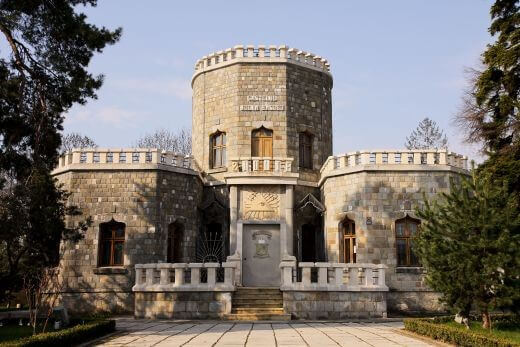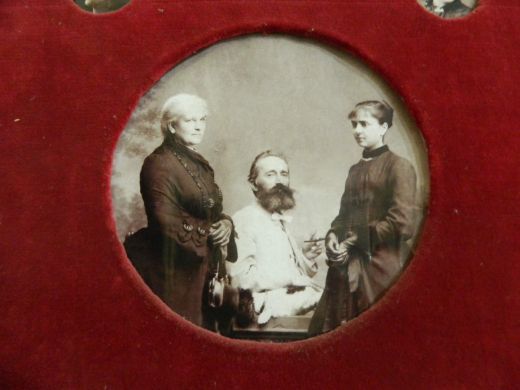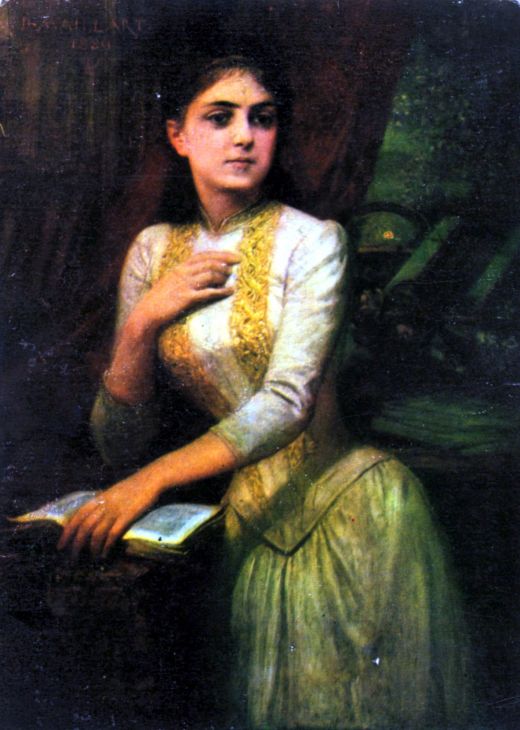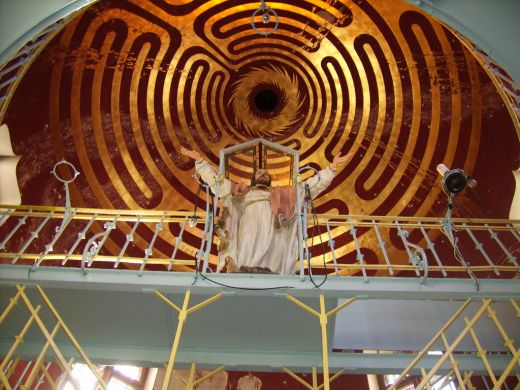MĂIASTRA: A History of Romanian Sculpture in Twenty-Four Parts
Igor Gyalakuthy

Muzeul Bogdan Petriceicu Hasdeu (Bogdan Petriceicu Hasdeu Memorial Museum), Câmpina, Romania
“More goat than donkey.” This is how my father described B. P. Hasdeu, with an epithet he reserved for men whose intellects he admired and whose views he loathed. Bogdan Petriceicu Hasdeu was a Romanian writer and linguist, and a prominent figure in the Romanian intellectual community of the late nineteenth century. Hasdeu was the father of Protochronism, the delusional school of revisionist history that exaggerates the feats of the ancient Dacians, a Thracian tribe thought to be the ancestors of modern Romanians. [Note: Protochronism is a historical aggrandizement that was used by Communists to stir up nationalist pride, and is yet another Romanian cultural hemorrhoid, one we will be examining in greater detail in entries to come.] B. P. Hasdeu’s goatlike brilliance had the power to inspire and confound, and the impact of his work can be felt across Europe to this day. To Romanians, however, Hasdeu’s legacy will forever be coupled with that of his only daughter, Iulia.
Iulia Hasdeu was born in Bucharest in 1869 to Petriceicu and his wife, also named Iulia. Her father’s daughter, young Iulia possessed a particularly acrobatic virtuosity. By age two, Iulia could read. By age eight, she spoke French, English, and German, as well as her native Romanian. Influenced by the work of her father, she spent her childhood days writing dry, academic histories of Wallachian princes. She had a mind for complex mathematics and an ear for musical composition, studying piano and canto at the prestigious Music and Declamation Conservatory, now the National University of Music Bucharest. More than anything, she loved writing poetry.
If they love the shady paths
and the peace of wispy nights
and nature, august mother
as if in reverie they cheer
and have no fear of the Chimera.
“The Chimera,” Iulia Hasdeu, 1887
[Note: this is the second stanza of a three-stanza poem. In the spirit of this entry, my English translation is assembled from both the Romanian and French versions of Iulia’s verse.]
When she was twelve, Iulia moved to Paris with her mother, where she soon passed her baccalaureate. Four years later, in 1886, she became the first Romanian woman ever to study at the Sorbonne. For her doctoral thesis, she wrote a treatise on Romanian folklore that caught the attention of many in her home country. Above all, she was her father’s beloved, and when she began to show promise, he dropped much of his own work in order to publish collections of her poetry. [Note: In a chimeric twist, there were faint hints that Iulia may have been born with both male and female genitalia. These hints are the basis for a thinly veiled short fiction written by B. P. in which a king, angered with the rumors his daughter’s doctors have spread, replaces the heads of the libelous men with those of various animals, and the animals’ with the heads of the doctors. With this in mind, I walk delicately around the issue.]
Two years later, at the age of eighteen, Iulia contracted tuberculosis and fell deeply ill. To the very end, she worked tirelessly to exercise the full range of her prodigious talents. “I’m still alive and I will never give up this work, as long as blood is still flowing through my veins and life is still breathing in my chest,” Iulia wrote to her father from Paris in 1888. A few months later, she passed away in her home in Bucharest.
Her father crumbled under the weight of his grief. He retreated to Câmpina, a sleepy mountain town in Prahova county, where he built a monument to his late daughter.
The Castelul Iulia Hasdeu is a folly house built to resemble a medieval castle. Like much of the architecture in Romania, the castle fell victim to two world wars, to the cultural dark ages of Communism, and to a devastating earthquake in 1977, dancing on the brink of annihilation for over one hundred years. Today, the castle houses the Bogdan Petriceicu Hasdeu Memorial Museum, a collection of sitting rooms decorated with family artifacts. This museum holds many art treasures: a marble bust of Iulia’s mother carved by famous Romanian sculptor Karl Storck [Note: Karl is the father of “wandering rock” sculptor Frederic Storck. See Part I.]; a portrait of B. P. Hasdeu by Nicolae Grigorescu; and many other paintings and sculptures, many of which depict Hasdeu mourning his lost daughter. A front room is dedicated to young Iulia’s personal effects, including her childhood diary, her favorite baby doll, and two collections of her poetry—not only poems written both before untimely death, but also after.
For the eleven years from the time of the castle’s completion to the time of his death, Hasdeu maintained that he communicated with Iulia regularly from beyond the grave. The castle, stationary though it stands in its mountain hamlet, functioned as a sort Charon’s ferry uniting father and daughter. Throughout the rooms are traces of their paranormal correspondences and the remnants of Iulia’s posthumous endeavors, including a black marble tablet of sheet music titled “Sursum,” a hymn composed by Iulia from the afterlife. She is even said to have designed the castle herself, transmitting blueprints for the structure through her father’s hand. On the building’s exterior facade, above a large stone door, is the symbol of the Eye of Providence, underneath which is written Galileo’s famous, post-confession observation, “E pur si muove [sic].” Below this inscription, on either side of the stone door, are two stone thrones, each topped with a small stone Sphinx. This Sphinx is Iulia’s totem, and two similar Sphinxes top her tomb in Bellu cemetery in Bucharest. [Note: unlike the more familiar Egyptian version, the Greek Sphinx was typically female. A Sphinx is defined as a chimera in the more contemporary usage of the word.]
In the interior of the domed center tower stands a large, wooden statue of Jesus Christ, carved by Raphael Casciani, a sculptor of the Parisian school. This sculpture is the centerpiece of the castle’s temple room, where Hasdeu conducted his profane séances. Christianity, here, is our lion head. The juxtaposition of these sculptures and reliefs is fundamental to Hasdeu’s particular brand of spiritism: the pseudoscientific connections among Egyptian, Christian, and Pagan mythologies, astronomy, and mathematics. It is the architectural chimera, an assemblage designed in the depths of the various factions of Hasdeu’s Renaissance mind and united under a single purpose: the assuaging of his enormous grief. [Note: the chimera was a famous preoccupation of the great Dimitrie Paciurea, who sculpted the mythological creatures for years until they finally drove him mad.]
Isn’t it astonishing what rubbish will rush to fill in the widening and deepening holes of the human heart? But who can blame us? Who of us would not, when death comes knocking for a loved one, barricade the door with every table and chair in the house? And that is what this castle is: the kitchen sink, one that echoes Romania’s history, itself a sedimentary buildup of the erosions of the Roman, Ottoman, Austro-Hungarian, and Russian empires.
The morbidity of Iulia’s ghostly omnipresence, the lengths taken by her unraveling father, the awe at their shared brilliance and the depths of their misfortune: it is, all of it, admittedly overwhelming. Written on the museum’s informative website is a scolding: “Some people’s ignorance, other people’s prejudices, their impossibility to raise at the level of Hasdeu’s mind, sometimes labeled the monument as a strange place.” The caretakers of this museum are understandably offended by a certain rigidity of perspective, a retreat into fear rather than the blankness of a curious mind. But to their objection to the word “strange,” or straniu—a word that hovers in the air around the mountains of this region like a fog—I must respectfully object.
The Castelul Iulia Hasdeu is nothing if not strange. “Strange” is a cipher for unlocking the emotional and intellectual significance of the monument, of the sculptural history I present here, and exactly where we must begin. It is an adjective free from the prescription of any singular, definitive emotion. Instead, the word “strange” is an amalgam of sentiments, a chimeric mixture equal parts repelling and intriguing. It represents nothing more than a proximity to the shaded spaces between light and dark, living and dead, spaces that reconcile this monument’s haunted appearance with its status as an important, even beautiful part of our architectural past. If we love the shady paths, we must not fear the chimera.
(see PART I: WANDERING ROCKS)
DR. IGOR GYALAKUTHY is a professor emeritus at the Universitatea Nationala de Arte in Bucharest. In 1993, he received the National Medal for achievement in the field of art history. He lives in Cluj-Napoca with his Lakeland terrier Bausa.













